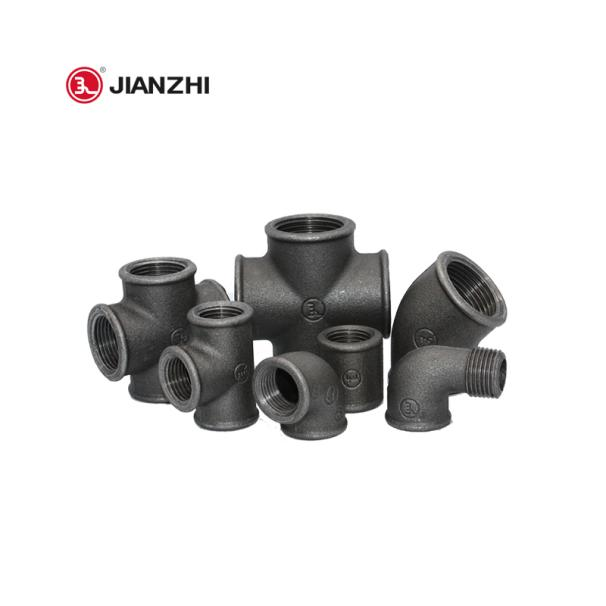Nov. 04, 2024
Copper pipe fittings play a crucial role in the pipeline and industrial fields, serving as key components for ensuring pipeline connections, flow control, and directional changes. Due to its excellent durability and corrosion resistance, copper fittings are indispensable for building safe, reliable, and efficient water, gas, and other fluid transportation systems. This article will focus on copper pipe fittings, covering their types, uses, advantages, installation precautions, and maintenance measures.

Various shapes and sizes of copper fittings can meet the different needs of pipelines and industrial facilities. The common types are as follows:
● Bend: It can change the direction of the pipeline system, usually at an angle of 45 or 90 degrees. When pipelines need to bypass obstacles or change layouts, elbows are essential fittings.
● Joint: Used to connect two pipes of the same diameter to form a continuous flow path. Some joints are designed with stop devices to achieve a more stable connection.
● Three way connection: can be used for branching connections, allowing fluid to flow in two or more directions, and is widely used in residential and commercial pipeline connections.
● Adapter: Used to connect copper pipes with pipes of different materials(such as PVC or galvanized steel).
● Reducing pipe: connects pipes of different diameters to manage the flow between different parts of the pipeline system.
● Cap and plug: used to temporarily or permanently seal the end of a pipeline to prevent leakage and contamination.
Copper fittings are widely used in both residential and commercial sectors.
● Residential pipelines: Copper fittings are widely used in household pipeline systems, especially in water supply pipelines, due to their corrosion resistance and ability to withstand high water pressure.
● Heating system: Copper is a common material in heating systems (including floor heating and radiator connections) because it can withstand high temperatures without damaging structural integrity.
● Gas pipeline: Given that copper is resistant to certain chemicals, it can be used for gas pipelines but typically requires specialized fittings and additional safety standards.
● HVAC system: Copper fittings are commonly used in HVAC (heating, ventilation, and air conditioning) systems, especially in applications that require heat and pressure resistance.
Copper accessories are highly favored for the following reasons:
● Corrosion resistance: Copper itself has strong corrosion resistance and can be used for a long time, even in humid environments.
● Durability: Properly installed copper fittings are highly durable and can last for decades, significantly reducing the need for maintenance and replacement.
● Heat resistance: Copper has a high melting point and is suitable for systems that transport hot water or other high-temperature fluids.
● Flexibility: Copper is not only sturdy but also has a certain degree of flexibility, making it easy to adjust pipeline layout.
● Sustainability: Copper is a recyclable material, and compared to other pipeline materials, copper fittings are more environmentally friendly.
Despite the numerous advantages of copper fittings, there are also areas to be aware of when using them:
● Cost: Copper fittings are usually more expensive than fittings made of plastic or other materials, which can have an impact on project budgets.
● Installation tips: Installing copper fittings requires certain skills and special tools, such as welding guns used for welding.
● Water quality sensitivity: Certain types of water, especially strongly acidic or alkaline water, can affect copper fittings and accelerate their corrosion.
● Compatibility with other materials: When copper is combined with other metals (such as galvanized steel), there is a risk of electrochemical corrosion, which can weaken system performance.
To achieve the best performance of copper fittings, the following techniques can be referred to during installation:
The use of appropriate tools, such as pipe cutters, sandpaper, flux brushes, etc., is crucial for obtaining clean cuts and smooth joints.
● Welding and brazing: Strong and leakproof connections can be achieved through welding or brazing. Before heating and welding joints, ensure that the ends of the pipes are clean and coated with flux.
● Check water pressure: Although copper fittings are sturdy, it is still necessary to evaluate the water pressure requirements for specific applications to avoid excessive pressure on the fittings.
● Check for leaks: After installation, pressurize the system with water or air to test for leaks. Any joints with obvious leaks should be repaired immediately.
After installation, copper fittings do not require much maintenance, but regular checks should be conducted for signs of wear, corrosion, or leakage. Regular cleaning helps with long-term use. In hard water areas, using soft water solutions or installing water filtration systems can reduce the risk of mineral accumulation in accessories.
Copper pipe fittings are a durable and reliable choice for pipelines and industrial applications. Its types and sizes are diverse, providing multiple solutions for the smooth and efficient flow of fluids. Although the price is relatively high, its long lifespan, corrosion resistance, and environmental friendliness make it the preferred choice for many users. Following best practices and regular maintenance during installation, copper pipe fittings can be effectively used for decades.
SAFER
PRODUCT INFO
ABOUT JIANZHI
TECH DATA
Contact Us
E-mail: sales1@jianzhi-fitting.com
Tel: +86 18698027872
Office In Tianjin:
Heping District, Tianjin, China.
Production Base 1:
Chifeng, Inner Mongolia, China.
Production Base 2:
Tangshan City, Hebei Province, China.
Production Base 3:
Schelei Street,Baicoi City,Prahova County,Romania
Service email: info.ro@jianzhi-fitting.com
Sales email: market.ro@jianzhi-fitting.com
Tel: +40(755)011 849
